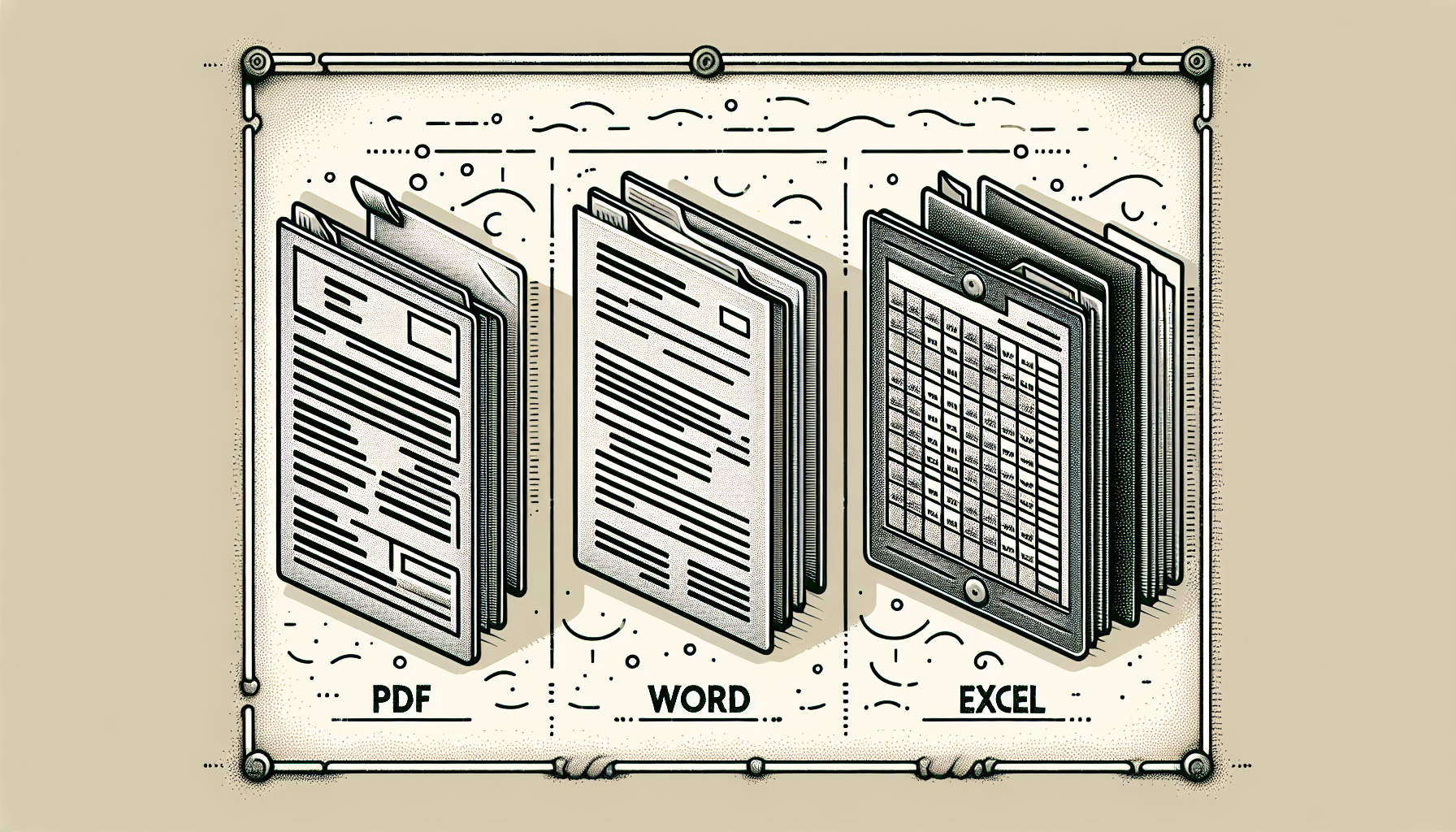
Struggling to get invoices out quickly and accurately can hinder a freelancer’s workflow. Effective billing starts with the right tools — specifically, an invoice template freelance that fits your needs. This guide provides a concise overview of free, professional templates to help you bill like a pro, not just like any other freelancer.
Key Takeaways
- Professional invoice templates enhance a freelancer’s brand, ensure consistent communication with clients, and help maintain organized financial records.
- A range of free customizable and industry-specific invoice templates with integrated payment options exists, catering to various freelancing needs and simplifying the payment process for both freelancers and clients.
- Freelancers can either choose from existing templates or create their own to convey a unique brand identity, with an emphasis on clear payment terms, timely invoicing, and consistency to maintain professional relationships and efficient payment cycles.
Why Every Freelancer Needs an Invoice Template

In the world of freelancing, sending professional invoices is indispensable, not just a bonus. Your invoice mirrors your freelance business identity, and utilizing a professional invoice template is equivalent to dressing for success – it leaves a strong impression. The visual appeal of a well-designed invoice template can be a game-changer, showcasing your attention to detail and professionalism, and when you incorporate personal touches, it reinforces your brand and can encourage client retention.
But it’s not all about appearances. Freelance invoice templates act as the multi-tool of the freelancing business universe, saving time and energy with their pre-structured format for crucial billing details. And when it comes to tracking payments, maintaining organized records, and fortifying client relationships through clear and consistent communication, a professional freelancer invoice and template is your best ally. After all, invoices serve as an official record of your freelance services, ensuring transparency and trust with your clients.
Uniformity is vital in any business, and for freelancers, the regular use of a specific invoice template aids in cementing your brand identity. It’s about making your communications immediately recognizable to your clients, which in turn, strengthens your professional relationship with them. It’s not just an invoice; it’s a statement of your freelance brand’s reliability and professionalism.
Top Free Freelance Invoice Templates

In the dynamic marketplace of freelance work, an appropriate invoice can be the deciding factor between timely payment and an invoice getting lost in the client’s inbox. The good news? There’s a cornucopia of free invoice templates out there, including a freelancer invoice template, designed to cater to the diverse and ever-evolving needs of freelancers. With the help of a freelance freelancer invoice templates generator, you can find a template that offers the utmost customization, one that speaks the language of your industry, or one that makes receiving payments a breeze, ensuring there’s something for every type of freelancer.
Customizable and User-Friendly Options
Your freelance invoice goes beyond being just a bill – it serves as a canvas for your brand. Customizable invoice templates offer freelancers the flexibility to add a personal touch to their bills. Whether you’re working on a large standalone project or juggling multiple clients, adding your own logo and client information can set you apart. Tools like Microsoft Word and Google Docs are playgrounds for the creatively inclined, allowing you to play with colors, fonts, and design elements until your invoice is a perfect reflection of your brand.
If you’re not deft at Word or adept at Google Docs, don’t worry. User-friendly options like Canva and Jotform have got your back. These platforms make personalizing your invoices as simple as drag and drop. Automatically add your brand colors, tweak fonts, or upload your logo to create an invoice that’s not only professional but also uniquely yours. And for those who love numbers, Excel templates come equipped with formulas to calculate totals, taxes, and even generate an invoice number in a flash, saving you time and potential headaches.
Some options for creating personalized invoices include:
- Canva: Allows you to easily customize your invoice with drag and drop features
- Jotform: Provides a user-friendly interface for creating professional invoices
- Excel templates: Equipped with formulas to calculate totals and taxes quickly
- Invoice generator: A tool designed specifically for generating customized invoices
The beauty of customization is that it allows you to tailor your self employed invoice template to the exact requirements of your freelance business. Whether it’s including a breakdown of hours for a freelance project or setting up recurring invoices for regular clients, these templates enable you to create an invoicing system that works for you. They’re flexible, they’re efficient, and best of all, they let your freelance business name and brand shine through every transaction.

Industry-Specific Templates
All freelancers aren’t alike, and the same goes for their invoicing requirements. Enter industry-specific templates—designed with the unique contours of your field in mind. For the wordsmiths, the pixel pushers, and the code wranglers, there are templates tailored to the intricacies of your trade. Hello Bonsai, for instance, caters to freelancers by offering templates that resonate with niches such as writing, design, and development.
But what about the freelancers whose work doesn’t fit neatly into a predefined category? Invoice Simple steps up to the plate with templates that ensure all the necessary components are present, without sacrificing a clean and professional layout. For those who crave even more control, JotForm’s editor lets you tweak everything from design elements to font styles, ensuring your invoice stands out in a sea of sameness.
Then there’s the functionality to consider. PandaDoc templates not only look good, but they also come with bells and whistles like recurring invoices and automated reminders that make billing less of a chore and more of a subtle art. And for the freelancers who prefer a one-stop shop, PayPal’s professional invoice templates allow you to blend your company logo with the convenience of direct online payments.
Templates Integrated with Payment Platforms
The ultimate objective of every invoice is unambiguous: receiving payment. Templates that play well with payment platforms like Stripe or PayPal are the equivalent of rolling out the red carpet for your payments. They simplify the process for your clients, allowing them to pay through various methods—be it credit card, e-commerce website, or direct bank transfer. And when you’re requesting payment for that app development project, you’ll want to be sure your invoice includes all the necessary payment details and an invoice date to get paid faster. Ensuring that the invoice details match with the provided services is crucial for a smooth transaction.
Integration doesn’t just mean convenience for your client; it’s also a boon for your own record-keeping. When your invoice templates sync with your accounting software, you can:
- Kiss goodbye to the administrative tasks of manually tracking payments and client accounts
- Ensure seamless integration with your business systems
- Avoid hitting any snags when tracking the entire payment lifecycle
Remember that some templates might have limitations—so choose one that integrates seamlessly with other templates in your business systems, ensuring you don’t hit any snags when tracking the entire payment lifecycle.
One of the greatest advantages of using these integrated templates is the ability to cater to all your clients, regardless of where they are in the world. Handling international payments becomes a walk in the park, and you can focus more on delivering quality services and less on the nitty-gritty of payment collection. In short, these templates are like a personal assistant for your invoicing—handling the payment terms, payment due date due dates, and late payments, so you don’t have to.

Creating Your Own Freelance Invoice Template
Creating your own freelance invoice template from scratch is comparable to preparing a gourmet meal – there’s a sense of accomplishment in constructing something from the ground up. It’s about having total control over every aspect, from the layout to the fonts used for the invoice details. Whether you choose to bill upfront or upon completion of a project, a personalized template can reflect the specifics of your freelance services with finesse. To create a freelance invoice that stands out, consider customizing your template to match your unique brand identity.
Let’s be honest – much like any handmade masterpiece, a custom invoice template necessitates time, effort, and a bit of skill. You’ll need to understand how to format your invoices correctly, accounting for:
- flat rates or hourly billing based on your freelance project’s complexity
- including a personal note or project-specific message to enhance the client experience
- maintaining a copy of every invoice for your records to keep your freelancing business on track.
So, is creating your own template the right move for you? It depends. If you have the time and desire to put a unique stamp on your invoices, and you’re comfortable with the potential learning curve, it can be a rewarding endeavor. But if you’d rather spend your time focused on your actual freelance work, you might find the efficiency of ready-made templates more appealing. Either way, the goal is the same: to send professional invoices that get you paid and keep your clients coming back.
Tips for Effective Freelance Invoicing

To enhance your freelance invoicing approach, initiate by establishing transparent payment terms. Are you sending a prepayment invoice or will you bill after the work is complete? Either way, clarity is your best friend. Offer as many payment methods as possible to accommodate your clients’ preferences, and don’t forget to track these transactions with unique invoice numbers for recurring invoice for each client.
Timing holds paramount importance. Billing right after the completion of a project – or as mutually agreed – imparts a professional tone and creates a schedule that clients will value. A detailed invoice with tasks itemized line by line in plain language can make all the difference in how quickly you get paid. And when it comes to the actual creation of the invoice, digital templates that feature automatic calculations and digital payment links can save time and reduce errors.
But what about those pesky late payments? Stay diligent by keeping a meticulous record of all your invoices, track payments, and follow up with reminders as the due date approaches. This proactive approach ensures you stay on top of your freelance invoicing and keeps the cash flowing. Remember, being professional doesn’t mean being passive—take charge of your billing, and your freelancing business will thrive.
How to Choose the Right Invoice Format

The structure of your invoice holds a key role in its perception – and the speed at which you receive payments. PDFs are the go-to for many freelancers, thanks to their universal compatibility and resistance to formatting changes across devices and software. When you send a PDF invoice, you can rest easy knowing that what you see is what your client gets.
On the other hand, Microsoft Word might tempt you with its familiarity, but beware—its chameleon-like nature can cause formatting issues when opened on different devices, which could affect the invoice’s professional appearance. Excel, with its arsenal of built-in formulas, is the format of choice for those who need to perform complex calculations, or when the invoice involves a detailed breakdown of services provided and rates.
Ultimately, your choice of format should align with your invoicing needs, your clients’ preferences, and your own ease of use. Consider the complexity of the invoicing you’ll be doing, the stability of the format across platforms, and the professionalism it conveys. The right format will make invoicing a smoother part of your workflow, helping you to stay organized and get paid on time.
Handling International Clients and Currency Conversion
A diverse clientele can offer numerous benefits, but managing clients across the globe can complicate matters. International freelancers must navigate the choppy waters of currency conversion, keeping an eye on fluctuating exchange rates that can impact how much you actually receive.
To effectively manage clients from different countries, consider the following:
- Establish clear payment terms that factor in currency conversion costs.
- Stay updated on exchange rates and adjust your rates accordingly.
- Use online payment platforms that offer currency conversion services.
- Communicate openly with your clients about any potential currency-related issues.
By taking these steps, you can ensure smooth financial transactions and maintain positive relationships with your international clients.
But currency is just the tip of the iceberg. Each country comes with its own set of tax laws that you’ll need to familiarize yourself with to ensure compliance. This might mean digging into the tax implications in your client’s jurisdiction or even seeking professional advice to avoid any legal missteps.
Managing international clients is a balancing act that requires attention to detail and an understanding of global economics. Despite the challenges, the payoff is worth it—working with a diverse client base can expand your reach and bring new opportunities to your freelancing business. With careful planning and the right tools, you can make international invoicing work for you.

Managing Taxes and Deductions in Your Freelance Invoices
Freelancers need not dread the tax season. With a little organization and the right freelance invoice template, managing taxes and deductions can be a breeze. Start by clearly separating tax line items on your invoices. This not only helps with clarity for your clients but also simplifies your own tax calculations come tax season.
Knowing the tax laws in your jurisdiction is key. Providing subtotals for services before adding taxes ensures that you’re collecting the correct amount from your clients. It’s also crucial to stay informed about any special costs or late fees that might apply to your freelance services sales tax amount, as these can affect the total amount due.
Once you’ve collected taxes, it’s your responsibility to remit them to the appropriate authority. Keeping precise records of all transactions will not only help you stay compliant but will also give you peace of mind. With these practices in place, managing taxes and deductions will become just another part of your streamlined administrative tasks, allowing you to focus more on your freelance business and less on paperwork.
Summary
Navigating the world of freelance invoicing might seem daunting, but armed with the right knowledge and tools, it can be a process that accentuates your professionalism and streamlines your business operations. From selecting the ideal free invoice template that reflects your brand’s identity to managing international payments and taxes, these insights will help you optimize your billing and foster stronger client relationships. Remember, your next invoice, is more than just a request for payment—it’s a reflection of your freelance business and your commitment to excellence.

Frequently Asked Questions
How do I make an invoice for freelancing?
Include your contact information, client’s contact details, invoice number, dates, breakdown of services, payment options, and terms on your freelance invoice. This will ensure a professional and comprehensive invoice that meets your needs.
What needs to be included in a freelance invoice?
When creating a freelance invoice, be sure to include your contact and client information, a detailed breakdown and phone number of services rendered, the invoice number and date, payment terms, and the total amount due. It’s important to provide comprehensive information to ensure clear communication and prompt payment.
Can I issue an invoice as a freelancer?
Yes, as a freelancer, you can issue an invoice once you have completed the work for your client. An invoice is sent after the completion of the work, unlike a quote which is sent before starting the work large standalone project itself.
Are there any advantages to using a PDF format for my invoices?
Yes, using PDF format for your invoices provides consistency across devices and software, maintaining a professional appearance.
How can I ensure I get paid on time when working with international clients?
To ensure you get paid on time when working with international clients, offer multiple electronic payment methods, account for currency conversion costs, and stay updated on the tax laws in your client’s country. This will help you streamline the client payment due process and minimize any delays.

